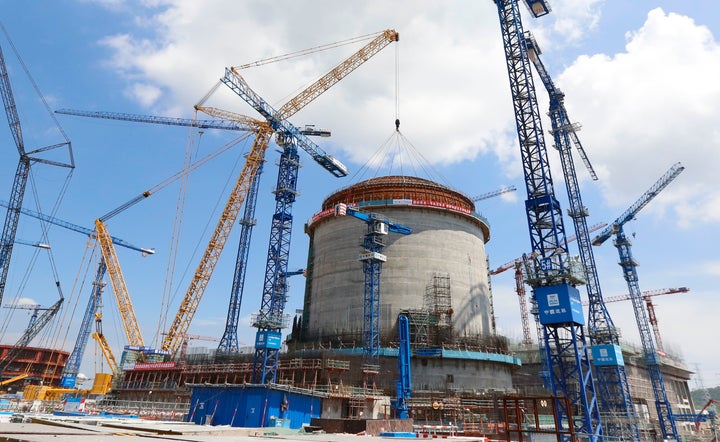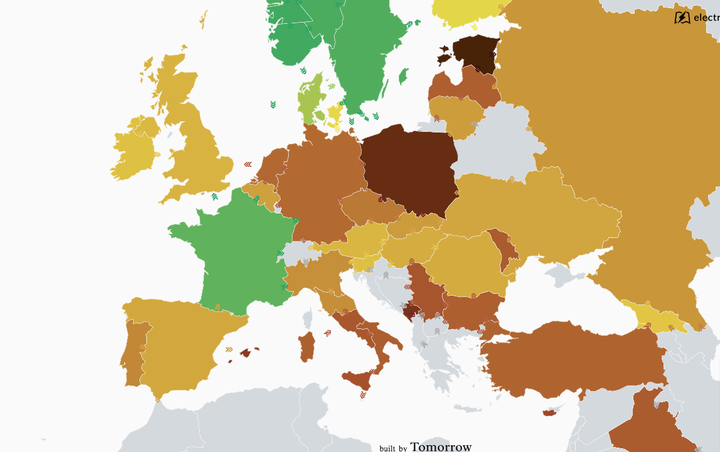
Good news and bad news arrived this week from the world’s top climate change experts. Good news: they can tell us in agonizing detail why the world should really, really keep the rise in global warming to less than 1.5 degrees Celsius. Bad news: the 132 authors of the 700-page report offer many ideas but no feasible plan for how to do that. As the International Panel on Climate Change’s co-chair put it, “One thing the report did not aspire to do is answer the question of feasibility.” So we can call it the Beach Boys Report ― “Wouldn’t it be nice...”
The 2015 Paris Agreement set an overall goal of staying below 2 degrees Celsius of global warming. However, the combination of the deal’s country-by-country goals would not accomplish that, and no major country is on track to meet its goals anyway. The 1.5 degree target is rightly even more ambitious, but also even further from the reality of energy systems in the world today.
In the first part of the 21st century, the fastest-growing energy source was coal. And energy use is going up rapidly because poor countries want to be richer ― and have a right to be. Climate goals and realities are not converging.
The main mitigation scenarios in the IPCC’s new report depend heavily on wind and solar power. These are both important parts of a solution, but they are harder and harder to deploy as they constitute more of the power grid. That’s because the outputs of wind and solar sources vary ― between day and night, between winter and summer, and often unpredictably. The desperately needed technologies to affordably store such renewable energy are still developing. Furthermore, renewable energies are diffuse, using large amounts of land, steel and concrete per unit of electricity generated, which makes it harder to expand them at the scale and pace called for by the IPCC’s dire timeline.
Other steps can also move us in the right direction without getting close to the goal. Individuals can stop eating meat and start taking public transportation. Air conditioners can become more efficient. Farmers can change fertilizer practices. But all of these put together won’t do nearly enough, and time is running out.

Here’s a different idea: Let’s look at countries or regions that have successfully cut carbon emissions. For the all-important electricity sector, the website electricitymap.org shows how many grams of carbon pollution a region creates for each kilowatt-hour of electricity it generates. For the world, the average is now about 500. It needs to drop below 50 within a couple of decades to prevent disaster.
In this effort, the world can be divided into three general tiers: places that use mostly coal, including Poland, India, China and Australia (they produce about 700 to 800 grams CO2/kWh); places that have mostly replaced coal with natural gas and some renewables, such as the United States and Germany (about 500 grams; California has reached 200-300 grams with great effort); and places that have miraculously decarbonized their grids to below 50 grams.
It’s true ― some places have already reached that goal.
Only two methods of electricity generation account for this. Some countries such as Norway and Uruguay are lucky enough to have vast hydroelectric capacity. Most nations don’t, and new hydropower comes at enormous cost to ecosystems.
The other decarbonized grids can be found in places that rely on nuclear power, such as France, Sweden, and Ontario, Canada. Nuclear power is free of carbon pollution; is highly concentrated, which minimizes environmental impacts such as those from mining and waste; and operates 24/7 without needing batteries. Most importantly, it can scale up rapidly ― exactly what’s needed to bring the IPCC’s goals out of fantasyland. Based on our analysis of many countries’ experiences, what might take a century to do with renewables alone could be done in 20 years with nuclear power.
Isn’t n-n-nuclear too dangerous, too expensive, too creepy? Well, no. It’s thousands of times safer than coal, which kills hundreds of thousands of people each year. Actually, nuclear power is the safest form of energy ever used, in terms of deaths per unit of energy.
Nuclear also generates far less waste than other energy sources, including renewables. The spent fuel from a lifetime of electricity use by an average American generated entirely from nuclear power would fit in a soda can. Someday we’ll bury it, but for now the waste can be left safely in its dry casks, certified for a hundred years, while we attend to bigger issues like saving the planet.
“What might take a century to do with renewables alone could be done in 20 years with nuclear power.”
Doesn’t nuclear power contribute to nuclear weapons proliferation? No. Weapons programs do not depend on civilian nuclear power, which operates under stringent international safeguards. The most problematic nuclear weapons countries, such as North Korea, do not even have civilian nuclear power. In fact, nuclear electricity has enabled disarmament, as nearly 10 percent of U.S. electricity in the last two decades came from dismantled Russian warheads.
Nuclear power needn’t be too expensive either. Existing U.S. nuclear plants, which generate one-fifth of the nation’s electricity, produce less expensive power than either coal or gas. In South Korea, electricity from nuclear power costs less than 4 cents/kWh, which is cheaper than that from any other source. The key to replicating South Korea’s low costs is to focus on repeatedly building a standardized design, which brings costs down to $2 billion per gigawatt. That’s about double the capital cost of a U.S. natural gas power plant, but half that of a U.S. coal plant and less than half of wind and solar power facilities with equivalent production.
The problem in North America and Europe is that older nuclear plants cost much less than new ones, even though we have better technologies today. The latest U.S. attempts to build nuclear power escalated to $12 billion per gigawatt. But then unlike South Korea, the United States has gone decades without practice.
Both Sweden and France have powered growing economies for decades on cheap nuclear power. Both transitioned off fossil electricity in less than 20 years. There is no reason the world can’t do the same now.
The IPCC has told us how urgently the world needs to decarbonize to prevent a climate catastrophe. We need a realistic plan. It will include huge increases in renewable power, greater energy efficiency and shifts in agriculture. It must also include building 100 to 200 new nuclear reactors worldwide each year for the next few decades. Instead of merely taking steps in the right direction that don’t add up, the world needs to get moving along this proven, feasible path to save our planet.
Joshua S. Goldstein, a professor of international relations, and Staffan A. Qvist, a clean energy engineer, are the authors of the forthcoming book A Bright Future: How Some Countries Have Solved Climate Change and the Rest Can Follow.